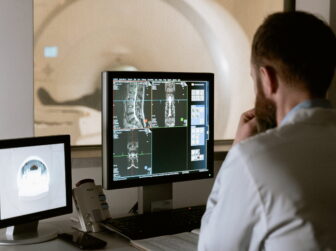Tag - IoMT
Blog , November 21, 2023 , internet of things, IoMT, Medical Internet of Things, Medical IoT, smart hospital
Exploring the Internet of Medical Things (IoMT): Revolutionizing Healthcare Connectivity
Exploring the Internet of Medical Things (IoMT): Revolutionizing Healthcare Connectivity
The Internet of Medical Things (IoMT) is an amalgamation of medical devices and applications that can connect to healthcare IT systems using networking technologies. This integration of IoMT devices is transforming the landscape of healthcare by enabling more efficient, personalized, and proactive treatment for patients. With an array of connected devices such as wearable biometric sensors, implanted devices, and even ingestible sensors, the IoMT provides a continual flow of real-time health data that is invaluable for patient monitoring and disease management.
One of the fundamental benefits of the IoMT is its ability to empower patients to take a more active role in their health. Continuous monitoring devices can alert patients to changes in their condition that may necessitate attention, often before they are even aware there is a problem. This proactive approach can lead to early intervention, potentially preventing complications and reducing the need for emergency care or hospitalization. Wearables that track activity, sleep, and heart rate are becoming increasingly sophisticated, offering insights that contribute to preventative healthcare regimens and chronic disease management.
The IoMT also greatly enhances the ability of healthcare providers to deliver personalized care. With access to a patient’s real-time data, clinicians can make more informed decisions, tailoring treatment plans to the individual’s unique health status. This can be especially significant for patients with chronic conditions such as diabetes or heart disease, where close monitoring can lead to better management and improved outcomes. The data collected can also help identify trends or patterns that may be indicative of a need to adjust treatment protocols, medications, or lifestyle changes.
Moreover, the IoMT streamlines operations within healthcare facilities. Automated inventory systems for medical supplies, smart beds that monitor patient vitals, and connected imaging devices all feed into electronic health records (EHRs), reducing administrative burdens and minimizing the likelihood of human error. The interoperability of these devices with EHRs is crucial, as it ensures that all relevant patient information is consolidated and easily accessible to healthcare providers. This connectivity not only improves the quality of care but also enhances the efficiency of the healthcare system as a whole.
While the potential of IoMT is vast, it is not without challenges. Concerns about the security and privacy of sensitive health data are paramount as these devices become more prevalent. The need for robust cybersecurity measures to protect against unauthorized access and data breaches is clear. Additionally, there is the issue of data overload—healthcare providers must be able to sift through the massive amounts of data generated to find what is relevant and actionable for patient care. The development of advanced analytics and artificial intelligence is key to addressing this challenge, providing the tools needed to make sense of the data and support clinical decision-making.
Another consideration is the digital divide; ensuring that IoMT benefits are accessible to all segments of the population is essential. This includes addressing disparities in access to technology and broadband connectivity, which are critical for IoMT devices to function effectively. Efforts must be made to ensure that these innovations do not exacerbate existing health inequities but rather serve to make quality healthcare more accessible and equitable.
In conclusion, the Internet of Medical Things represents a significant step forward in the digitalization of healthcare. It is reshaping how care is delivered, making it more responsive, personalized, and efficient. As technology continues to advance, the IoMT will undoubtedly play an increasingly important role in improving healthcare outcomes and creating a more connected and integrated healthcare ecosystem.
